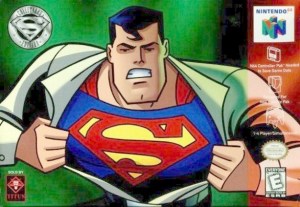Want smarter insights in your inbox? Sign up for our weekly newsletters to get only what matters to enterprise AI, data, and security leaders. Subscribe Now
Lisa Suennen is a founding partner of healthcare investment firm Psilos Group Managers. She blogs at Venturevalkyrie.com.
I have recently spent a lot of volunteer time with early/seed stage entrepreneurs, or at least people with big visions and new products wishing to be entrepreneurs. And what I have observed through these efforts is this: a key differentiator between inventors and successful entrepreneurs is that inventors are so wrapped up in their technology or vision and its features that they forget to think about whether or not it has any benefits to the market.
In contrast, entrepreneurs understand the difference between features and benefits and fixate on the latter, always thinking about who will need their product and why and not whether it is the most divine thing ever to see the light of day.
 It sounds simple, the feature vs. benefit thing, but I am often reminded that it isn’t.
It sounds simple, the feature vs. benefit thing, but I am often reminded that it isn’t.
As one whose job description is to hear new company pitch after new company pitch, it never ceases to amaze me how many smart people really don’t know the difference. And yet understanding this basic concept is essential to crossing over into that land of milk and honey, or at least into the land of fame and money.
Vision and a great idea are necessary, but they are not sufficient to creating a great business. And the way I see it, you’re not on the path to legitimate entrepreneurship if you don’t spend most of your time communicating about how your product or service benefits some very specific group of potential customers in a very specific way.
If you build it, by and large they will not come. But if you sell it well because you understand why your audience needs it and what they get out of using it, they will come in droves.
This whole topic was elevated in my consciousness in a big way recently when I was asked to serve as adjunct faculty for the National Science Foundation’s (NSF) I-Corp program. This program is designed and operated by the NSF to identify inventors and aspiring entrepreneurs from the ranks of research universities, primarily, and to put them through a sort of Lean Start-Up boot camp. They get eight weeks of coaching, cajoling and tough love from former entrepreneurs and business school professors.
 The goal is to help academic genius types turn their science into business concepts, or at least determine if the potential exists to do so.
The goal is to help academic genius types turn their science into business concepts, or at least determine if the potential exists to do so.
On the first day of this program at the “node” being managed by a triumvirate comprised of UC Berkeley (Go Bears!), Stanford, and UCSF, the program faculty heard each of the 24 groups make a first attempt at describing their product features, benefits and hypothesized target markets and business models.
Nine times out of ten students missed benefits entirely.
Worse yet, when prompted by faculty to elaborate the benefits of their divine vision, we got more blank stares than anything else. “I told you already,” was a common response, even though what had been communicated were the product’s features: faster, easier, more comprehensive were the most typical.
By and large, these concepts are features, NOT benefits.
What really matters to customers is the outcome realized or advantage achieved because something is faster, easier and more comprehensive. For example: the fact that a racecar is faster than other racecars is not a benefit, it is a feature. The benefit of a faster racecar is that it allows you to win more races.
Webster’s Dictionary defines a feature as “a prominent or conspicuous part or characteristic.” It defines benefit as “something that is advantageous or good.” These are clearly vastly different concepts, as the latter is, by definition, a positive thing while the former could go either way. Another way to think about this is that features are what you get and benefits are why you should care.
In other words, the benefits of a given idea should answer the question, “So What?”
 I was trying to think of a simple allegory to explain the difference between features and benefits when somehow Superman and Spiderman invaded my consciousness. I know, you might think I was a 10-year-old boy or a ComicCon nerd princess, but neither is true. Ok, I am about the height of a 10-year-old boy, but the similarities end there. Nevertheless, I somehow realized that these two universally known superheroes provide a great study in the contrast between the concepts of features and benefits.
I was trying to think of a simple allegory to explain the difference between features and benefits when somehow Superman and Spiderman invaded my consciousness. I know, you might think I was a 10-year-old boy or a ComicCon nerd princess, but neither is true. Ok, I am about the height of a 10-year-old boy, but the similarities end there. Nevertheless, I somehow realized that these two universally known superheroes provide a great study in the contrast between the concepts of features and benefits.
Ready, here goes:
I can’t imagine any of us are unfamiliar with the opening phrase associated with the original “The Adventures of Superman” story. It went like this:
Faster than a speeding bullet!
More powerful than a locomotive!
Able to leap tall buildings in a single bound!
“Look! Up in the sky!” “It’s a bird!” “It’s a plane!”
“It’s Superman!”
Look closely at that characterization and here’s what it tells you: the dude is fast, powerful and a hell of a jumper, but it really doesn’t tell you what good that serves.
For all we know the benefit of fast, powerful and jumpy is that he might more readily attract super-frogs than people who are otherwise slow, weak and earthbound. I am not sure who is in the market for super-frogs (Miss Piggy?) so it is very hard to tell whether Superman’s features are of use to a broad market and thus the basis for a high growth business.
As it turns out Superman conveys some pretty useful outcomes, but you wouldn’t know it from his slogan and thus the market might not give him the time or capital to realize his full potential if it weren’t for the super physique.
In contrast, the opening lines associated with Spiderman are these:
Spiderman, Spiderman,
Does whatever a spider can
Spins a web, any size,
Catches thieves just like flies
Look Out!
Here comes the Spiderman.
Now that is some good marketing.
It tells you features (web-spinner, etc), but more importantly the results those features enable: easily catching thieves. In other words, it conveys a value proposition in its entirety: a benefit conveyed as a direct result of Spiderman’s core feature set.
The fact that he is generally spiderish is, by and large, not so appealing unless you are an entomologist or a hungry bird. But the fact that his spidery qualities allow Spiderman to be a successful crime-fighter?
Well, that has wide customer appeal and you don’t need to read much further before throwing your support his way.


